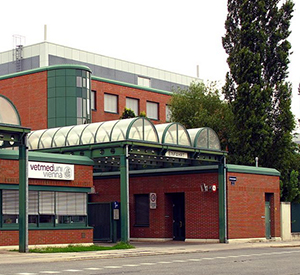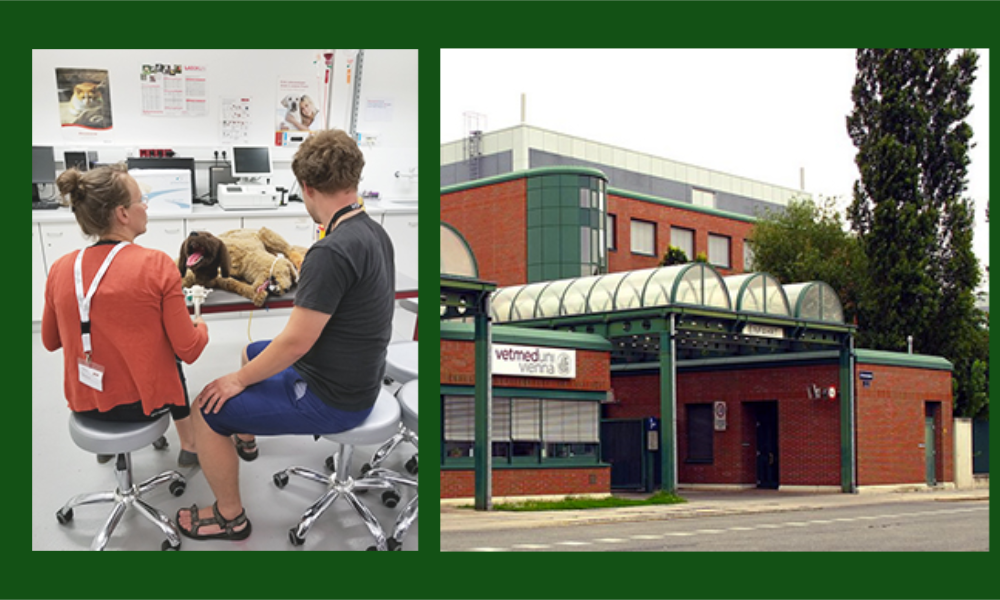July 28-29, 2017— The First International Camelid Congress in Vienna, Austria, featured four speakers from Oregon, including Dr. Chris Cebra, Dean Sue Tornquist, and OSU alum Rachel Oxley. OSU has been a world leader in camelid research for thirty years. Dr. Cebra has written or co-authored over 70 scientific articles concerning camelids, and has been involved with over 40 camelid research projects.
Nearly thirty camelid owners and sixty veterinarians attended the two-day conference at the Veterinary Medicine University Vienna. Camelids are becoming more popular in Austria, and the conference sought to broaden attendees’ knowledge of camelid medicine.
The third oldest vet school in the world, Veterinary Medicine University Vienna has more than 2000 students. “Its interesting to see a different approach. There is a lot of attrition as they go through the five-year program; over 200 start in a class and they only graduate about 100,” says Dr. Tornquist. ” These students are right out of high school so they are learning undergrad at the same time they are starting their veterinary education.”


While attending the conference, Dr. Tornquist took a tour of the college where she was particularly interested in their clinical skills lab which contained many models for practicing things like placing catheters and palpating. She would like to create a similar lab at OSU. “In Europe they do a lot more with models and keep the use of live animals to a minimum,” she said. “We are looking at the best way to combine models and live animals to give our students the best experience. For example, we start to teach physical exams in the ‘Animal Care and Handling’ class. Then in the second year, they are expected to do physical exams in anesthesia class, and we have felt they are not quite as prepared as they could be. Physical exams are one of those things you need to practice over and over to feel confident about your proficiency.”
OSU College of Veterinary Medicine currently has several animal models including those that allow students to listen to different heart or lung sounds, and models they can bandage or suture. “If we’re really going to do this right, we need to add more,” says Dr. Tornquist.



